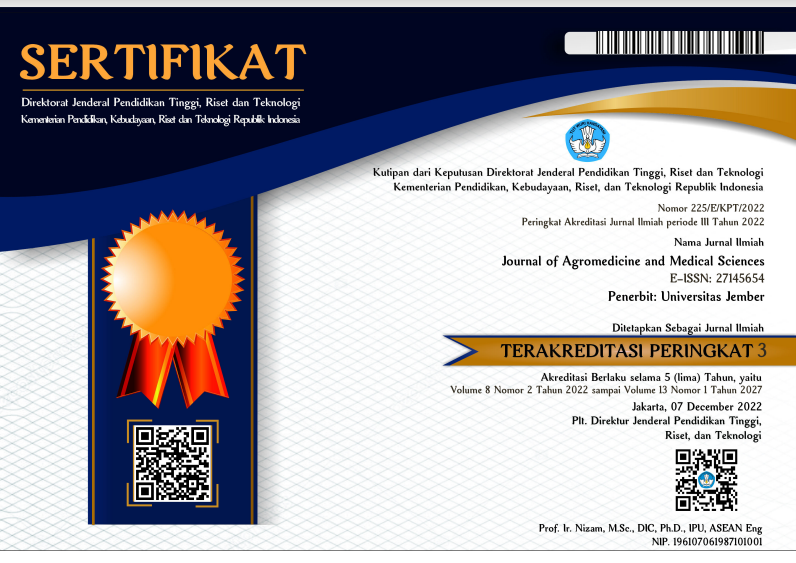Gestational Weeks Related with Maternal Anemia in Pregnancy at Sooko Public Health Center Mojokerto District
DOI:
https://doi.org/10.19184/ams.v10i2.44696Abstract
The prevalence of anemia in pregnant women in Indonesia is still high. Anemia in pregnancy has an impact on maternal and fetuses. We conducted a study on factors related to the incidence of anemia in pregnancy in pregnant women who had their first antenatal visit. The study was conducted on 218 pregnant women who had their first antenatal visit at the Maternal and Child Health Polyclinic at the Sooko Public Health Center, Mojokerto District in January – March 2021. We collected data on risk factors related to the incidence of anemia in pregnancy, namely maternal age during pregnancy, gestational week, distance between current and previous pregnancies, history of parity and body mass index. Chi-square analysis was performed to assess the relationship between variables with a significant value of p<0.05. It was found that 54 (24.8%) of pregnant women had anemia. Gestational age at risk (p=0.970), distance from previous pregnancies (p=0.135), history of parity (p=0.420) and body mass index (p=0.577) had no significant relationship with the incidence of anemia in pregnancy. Gestational age had a significant relationship (p=0.000) to the incidence of anemia in pregnancy. Gestational age has a relationship with the incidence of anemia in pregnant women who make their first antenatal visit. Anemia in pregnancy has a high prevalence. Further treatment is needed, such as giving Fe tablets and educating pregnant women during antenatal care to prevent and treat anemia in pregnancy.
Keywords: anemia in pregnancy, gestational week, antenatal care























